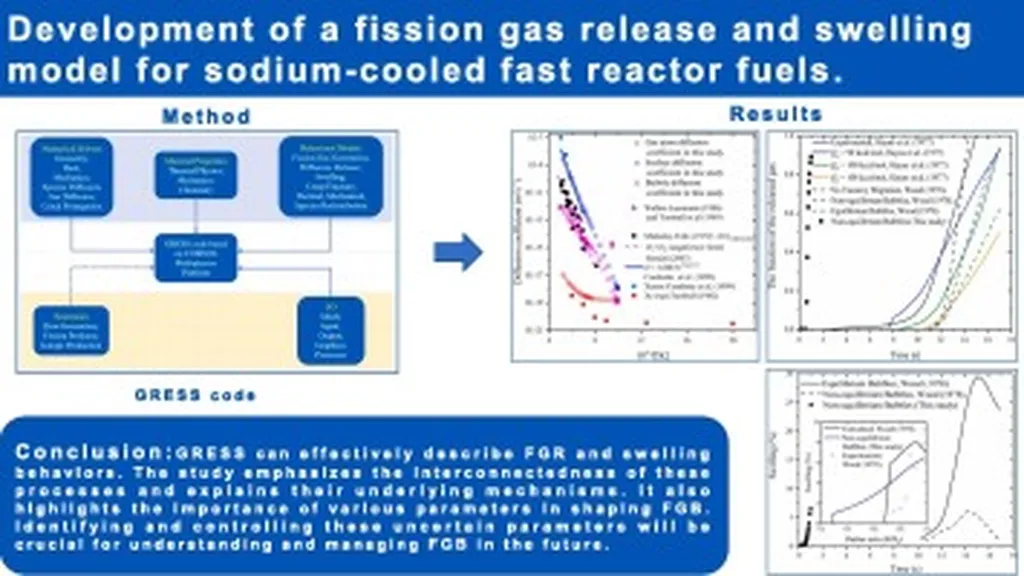Researchers from the University of Tennessee, Knoxville, and Oak Ridge National Laboratory have conducted a comprehensive study on fission gas behavior in uranium dioxide (UO2), a key material used in nuclear fuel. The team, led by Sourav Chatterjee and Michael R. Tonks, utilized advanced computational modeling to gain insights into the complex processes governing fission gas swelling and release.
The study focuses on the intricate interplay between intragranular clusters and bubbles, migrating grain boundaries (GBs), triple junctions (TJs), and their connection to a free surface (FS) in UO2. The researchers extended a hybrid multiscale framework that couples cluster dynamics (Xolotl) with a phase-field model (MARMOT) to simulate large 3D polycrystals with heterogeneous GB and surface diffusion and evolving GB networks. This approach allowed them to investigate bubble growth, coalescence, GB/TJ coverage, gas arrival at interfaces, and fission gas release (FGR) under various conditions.
The simulations were conducted at temperatures of 1200 K and 1600 K, with and without a free surface, and involved microstructures consisting of 10 and 100 grains. At the lower temperature of 1200 K, the researchers observed negligible bubble and GB evolution due to low GB mobility and gas transport. However, at the higher temperature of 1600 K, intergranular bubbles rapidly became lenticular and coalesced into networks while unpinned GBs migrated. Interestingly, fewer initial bubbles reduced coalescence but enhanced GB migration due to less pinning, producing spikes in interfacial gas arrival rate due to GB sweeping.
The study also found that bubble density versus mean projected area agreed with White’s (2004) coalescence trend and remained on the left side of the analytical curve, in contrast to several prior simulations. This discrepancy is likely due to the inclusion of GB migration in the current model. In domains with a free surface, early release was rapid, and bubbles near the FS collapsed to form a denuded zone, suppressing local network connectivity. GB coverage rose and approached but did not exceed 50%, while TJ coverage remained low without preferential nucleation at TJs.
The findings of this study provide mechanistic insight and quantitative metrics to inform engineering-scale FGR models, which are crucial for improving the safety and efficiency of nuclear reactors. The research was published in the Journal of Nuclear Materials.
This article is based on research available at arXiv.

